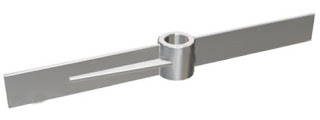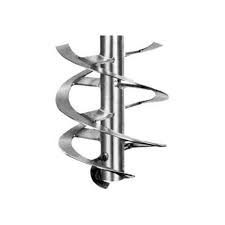I am sharing some important information regarding Industrial Agitator. Agitators are extensively used for multiple operations within the chemical, pharma, food, and petroleum industries. The role of the agitator is very important in industry, so we have to get some knowledge about it.
An Agitator is a mechanical device that is used stirring to the liquids or semi-solids. The agitator is an essential part of the reactor which contains a shaft and blades. The shaft is connected to the gearbox and also the assembly is driven by motors using electricity.
The most functions of using an agitator in any factory are:
- To keep homogeneous liquid bulk during storehouse.
- To disperse immiscible liquids.
- To get proper mixing of liquids.
- To promote chemical response inside the outfit.
- To increase heat transfer during heating or cooling.
- To keep the product in a mixed state till used.
- To blend miscible liquids.
- To dissolve some solids into liquid.
Type of Agitator
1. Turbine Agitators
2. Paddle Agitators
3. Anchor Agitators
4. Propeller Agitators
5. Helical Agitators
1. Turbine agitators: -
Turbine agitators are very versatile; they’re able to handle a large kind of mixing operations because these agitators can create a turbulent movement of the fluid because of the mix of rotational further as centrifugal motion. It’s also used for emulsification and dispersion of fluids at very high speed, Turbine Agitators are characterized by highly effective mixing capability across a broad viscosity range. They have an axial input and radial output.
2. Paddle Agitators: -
Paddle agitators are one of the foremost primary forms of agitators with blades that reach up to the tank walls. They are used where a uniform laminar flow of liquids is desired. This kind of agitator is specifically used for viscous materials.
3. Anchor Agitators: -
Anchor agitators are widely
used for mixing highly viscous and non-Newtonian fluids. As its name indicates
the form of the impeller resembles that of the anchor. These agitators also
extend and spread throughout the vessel such that there’s very less clearance
between the blades and the wall surfaces of the vessel. Anchor agitators are
also used when laminar flow is required. These impellers swing the whole batch
because the blades are nearly in physical contact with the walls of the
vessels.
4. Propeller Agitators: -
Propeller agitators are highly suitable for low viscosity products. Functions like homogenization, suspension, and dispersion are easily achieved using propeller-type agitators operating at medium to high speeds. These axial flow agitators are also suitable for solid in liquid suspensions as they prevent the deposition of solid particles.
5. Helical Agitators:
As the blades are arranged during a structure of a helix, they are known as helical agitators. Appearing sort of a threaded screw, helical agitators are axial flow agitators that provide vigorous motion within the vessel or tank. This kind of agitator is widely used in polymer industries.
Data required for the design of an Agitator
The following data are required for the industrial design of an agitator:
- Purpose/Function of agitation.
- Mixing cycle.
- Foaming tendency.
- Individual physical characters and their quantities of the materials to be mixed.
- Tank/Vessel/Reactor dimensions preferably with a sketch.
- Duty hours.
- Electrical duties.
- Material of Construction
|
Agitator type |
Application |
Advantages |
Disadvantages |
|
Turbine
|
Liquid& gas reaction Highly recommended for reaction and extraction |
Create excellent radial flow Required low power |
Only used for less viscous fluid below 15 to 20 Ns/m2 |
|
Paddle |
Solid mixing Liquid Mixing Crystallization |
Used for heavy-duty mixing Excellent for low-speed operation Adjusted with blades (2 or 4) |
Power consumption is very high Not suitable for reaction and liquid mixing |
|
Anchor |
Vastly used in the Pharmaceutical industry Milk and fat processing |
The heat transfer rate is very high |
Heavy-duty gearbox is required Power consumption is also very high |
|
Propeller |
Suitable for GLRs & ANFDs. |
Good miscibility Suitable for drying and pressing |
Required to be operated at high speed to avoid solid settlings in reactors. Required to be operated at low speeds in drying operations. |
|
Helical
|
Vastly used in paint industries Used for elastic polymer products |
Effectively works for High Viscous fluid |
Less radial flow patterns Heavy-duty gearbox is required Power consumption is very high |





~3.jpg)


1 Comments
Good . Hope for more such informative blogs .
ReplyDelete